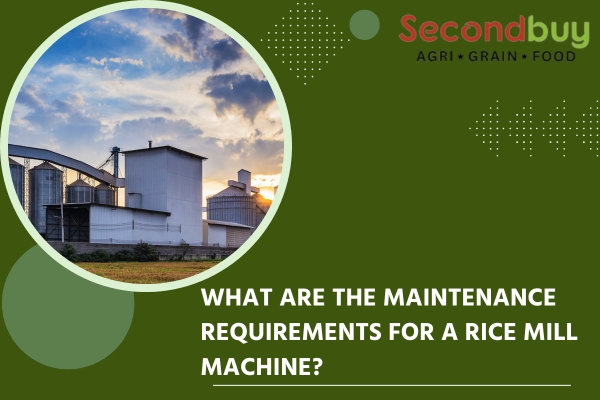What Are the Maintenance Requirements for a Rice Mill Machine?
Investing in a or buy rice mill machine is a significant step towards ensuring efficient rice processing and maximizing productivity. However, to maintain its performance and longevity, regular maintenance is essential. If you plan to buy rice mill machine, understanding its maintenance requirements will help you keep it running smoothly and avoid costly repairs. Here’s a comprehensive guide on the maintenance requirements for a rice mill machine.
Regular Cleaning
Daily Cleaning : Once you're done using it, make sure to give the machine a good clean. This gets rid of leftover rice bits and dust. It stops things from getting blocked up and helps it run smoothly.
Monthly Deep Cleaning : Once a month, perform a deep clean of all parts, including the hopper, milling chamber, and sieves. Use appropriate cleaning tools to reach all corners and crevices.
Lubrication :
A rice mill machine 's ability to operate smoothly depends on proper lubrication. Regularly check and lubricate the moving parts to reduce friction and prevent wear and tear. Use the manufacturer-recommended lubricants and follow the suggested schedule, which is usually indicated in the machine's manual.
Inspection of Parts :
Weekly Inspection : Inspect vital parts such as belts, rollers, and bearings for visible damage or aging. Make sure everything is in decent shape and substitute any components that exhibit major deterioration.
Monthly Inspection : Inspect the motor and electrical components for any irregularities. Look for loose connections or signs of overheating and address these issues promptly.
Calibration :
Regular check-ups make sure the machine works at its best. Set the machine to the type of rice it's handling. Change the pressure, speed, and other things it needs to work right. This will get you the greatest rice milling outcomes.
Replacement of Worn-Out Parts :
Over time, some parts of the rice mill machine will wear out and need replacement. Common parts that require regular replacement include:
- Rollers and screens : These parts experience the most wear and should be replaced as needed to maintain milling quality.
- Belts and pulleys : Inspect and replace these parts if they show signs of fraying or cracking.
- Blades : Ensure the blades are sharp and replace them if they become dull to maintain efficiency.
Checking for Alignment :
Misalignment of parts can lead to inefficient milling and increased wear and tear. Regularly check the alignment of the rollers, blades, and other critical components. Adjust them as necessary to ensure they are properly aligned.
Safety Checks :
Ensure all safety features are functional. This includes checking emergency stop buttons, guards, and protective covers. Regularly test these features to ensure they provide adequate protection to operators.
Documentation and Record Keeping :
Maintain a logbook to document all maintenance activities. Record the date of each maintenance task, the parts that were checked or replaced, and any issues that were addressed. This helps in tracking the machine's maintenance history and planning future maintenance tasks.
Professional Servicing :
Even with regular maintenance, it’s important to have the machine professionally serviced at least once a year. A professional technician can perform a thorough inspection, identify potential issues, and ensure the machine operates at peak performance.
Conclusion
Proper maintenance of a rice mill machine is essential for its longevity and efficient performance. When you buy rice mill machine , follow these maintenance guidelines to keep it running smoothly and ensure high-quality rice processing. Regular cleaning, lubrication, inspection, and professional servicing are key to avoiding breakdowns and prolonging the life of your investment. By taking these steps, you can ensure that your rice mill machine continues to deliver optimal results for years to come.

